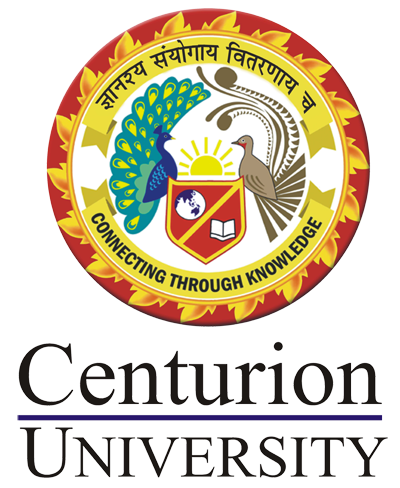Meteorology, Climatology and Geography
Course Attendees
Still no participant
Course Reviews
Still no reviews
Course Name : Meteorology, Climatology and Geography
Code(Credit) :FSEM1101(1-1-0)
Course Objectives
1. To provide students with a basic understanding of basic meteorology and weather events
2. Students will be able to interpret the general characteristics of weather maps, and further to become familiar with the temporal and spatial representation of meteorological variables (e.g. temperature, atmospheric pressure).
3. Students will learn about modern methods of weather forecasting.
Learning Outcomes
1. Students will understand the meteorological, climatology and geographical aspects of the earth that influence on all most all activities of the human being.
2. Students will understand the natural phenomenon with respect to fisheries activities like such as pond construction, assessment of the suitability of pond and the fishing in open water.
Course Syllabus
THEORY
1. Nature of Atmosphere: weather and climate; composition of atmosphere; structure of atmosphere.
2. Heat energy of atmosphere: process of heat transmission; heating of atmosphere; disposal of insulation; irregular heating of atmosphere.
3. Temperature: Temperature instruments; periodic, horizontal and vertical temperature variations; effects of vertical air motion on temperature. Humidity and water vapour: relationship between temperature and humidity; distribution of water vapour in atmosphere; evaporation, humidity instruments and measurements.
4. Condensation and precipitation: process of conditions of condensation, forms of condensation; precipitation; forms of precipitation, measurement of precipitation; rainfall in India.
5. Clouds and thunderstorms: amount of cloudiness; ceiling; classification of clouds; conditions of cloud formation; reporting and identification of clouds; thunderstorms.
6. Atmospheric pressure: meaning of atmospheric pressure; the laws of Gases; pressure units; pressure instruments; vertical, horizontal and periodic variations; isobars and pressure gradients.
7. Wind: characteristics of wind motion; wind observation and measurement; wind representation; factors affecting wind motion. Terrestrial or planetary winds: ideal planetary wind system; planetary pressure belts. Planetary wind system; secondary winds; monsoon winds; land and sea breeze.
8. Tropical cyclones: storm divisions; pressure and winds; vertical structure of storm centre; hurricane, sea, swell and surge; hurricane warning.
9. Weather forecasting: forecasting process; forecasting from local indications; role of satellite in weather forecasting; synoptic weather charts. Effects of climate change on fisheries sector.
10. Introduction to Geography: shape, size and structure of the earth; concepts of latitude, longitude and great circles; model globe, maps and different types of projections; cartography; landscape.
Practicals:
1. Practical-Graphic representation of structure of atmosphere; physical layering and compositional layering.
2. Temperature instruments: simple thermometers; Six's Max-Min Thermometer; thermograph. Isotherms: world mean temperatures-January to July. India mean temperatures - January to July.
3. Condensation: observation and identification of various types of clouds. Depicting sky picture
4. Humidity measurement: hygrometer; psychrometer; relative humidity; dew point.
5. Precipitation: measurement of rainfall using rain gauge.
6. Atmospheric pressure measurement: fortin' s mercurial barometer; Aneroid barometer. Isobars: India mean pressure - Jan to July.
7. The Earth: diagrammatic representation of shape, size, structure, zones, latitudes, longitudes and great circles.
Suggested books:
- Miller A. 1983. Elements of Meteorology. Charles & Merrill Books.
- Pettersen Sverre. 1958. Introduction to Meteorology. McGraw Hill Book company.
- Miller Albert. 1966. Meteorology. Charles & Merrill Books.
- Singh R. L. 1990. India - A Regional Geography. National Geographical Society.
- A.M. Bagulia. 2006. Indian Geography. Eastern Book Corporation.
Session Plan
Session 1
1. Nature of Atmosphere: weather and climate; composition of atmosphere; structure of atmosphere.
L1 Introductory class
L1-2.Atmosphere
1. Practical-Graphic representation of structure of atmosphere; physical layering and compositional layering.
Layers of the Atmosphere
Session 2
Practical-Graphic representation of structure of atmosphere; physical layering and compositional layering.
Session 3
2. Heat energy of atmosphere: process of heat transmission; heating of atmosphere; disposal of insulation; irregular heating of atmosphere.
L2 HEAT ENERGY OF ATMOSPHERE
Session 4
3. Temperature: Temperature instruments; periodic, horizontal and vertical temperature variations; effects of vertical air motion on temperature. Humidity and water vapour: relationship between temperature and humidity; distribution of water vapour in atmosphere; evaporation, humidity instruments and measurements.
L3 TEMPERATURE VARIATION IN ATMOSPHERE
L3-1 water vapour and humidity
Session 5
Practical-Temperature instruments: simple thermometers; Six's Max-Min Thermometer; thermograph. Isotherms: world mean temperatures-January to July. India mean temperatures - January to July
P2 Thermometer
Six's Max-Min Thermometer
Session 6
4. Condensation and precipitation: process of conditions of condensation, forms of condensation; precipitation; forms of precipitation, measurement of precipitation; rainfall in India.
L 4 condensation and precipitation
Session 7
Practical-Precipitation: measurement of rainfall using rain gauge.
Session 8
5. Clouds and thunderstorms: Amount of cloudiness; ceiling; classification of clouds; conditions of cloud formation; reporting and identification of clouds; thunderstorms.
L 5 CLOUDS
L5-2 clouds
L 5-3 Thunderstorms
Session 9
Practical-Condensation: observation and identification of various types of clouds. Depicting sky picture
Session 10
6. Atmospheric pressure: meaning of atmospheric pressure; the laws of Gases; pressure units; pressure instruments; vertical, horizontal and periodic variations; isobars and pressure gradients.
L6 AIR PRESSURE
Session 11
Practical-Atmospheric pressure measurement: fortin' s mercurial barometer; Aneroid barometer. Isobars: India mean pressure - Jan to July.
Session 12
7. Wind: characteristics of wind motion; wind observation and measurement; wind representation; factors affecting wind motion. Terrestrial or planetary winds: ideal planetary wind system; planetary pressure belts. Planetary wind system; secondary winds; monsoon winds; land and sea breeze.
L 7 WIND
Wind system
Wind
Session 13
Practical-Humidity measurement: hygrometer; psychrometer; relative humidity; dew point.
Session 15
9. Weather forecasting: forecasting process; forecasting from local indications; role of satellite in weather forecasting; synoptic weather charts. Effects of climate change on fisheries sector.
L9 Weather forcasting
L9 India Meteorology Department(IMD)
Session 16
Introduction to Geography: shape, size and structure of the earth; concepts of latitude, longitude and great circles; model globe, maps and different types of projections; cartography; landscape.
L10 Map Projections
L10 latitude and longitude
l-10 What Is Cartography
Session 17
Practical-The Earth: diagrammatic representation of shape, size, structure, zones, latitudes, longitudes and great circles.


Recent Comments